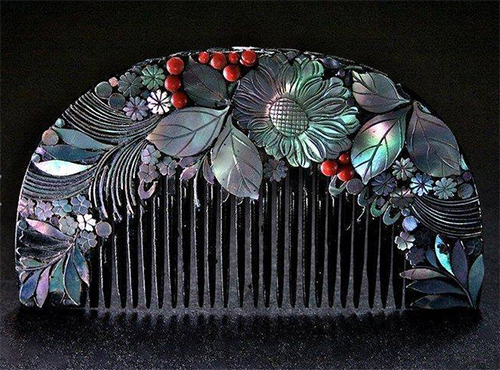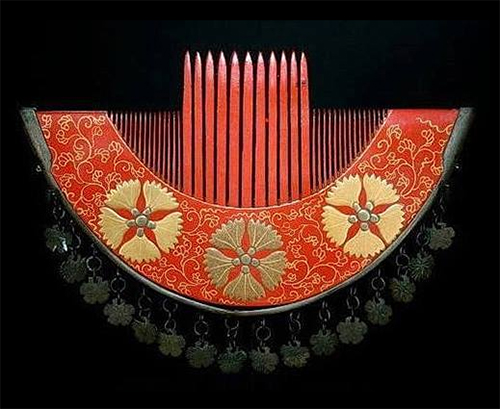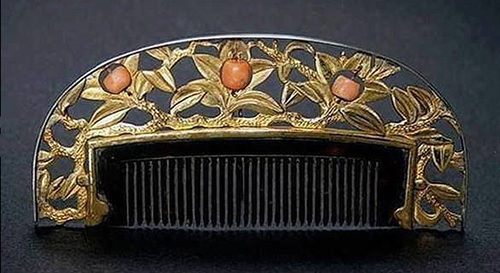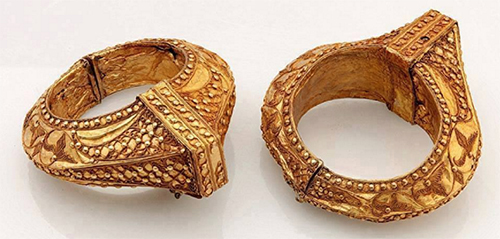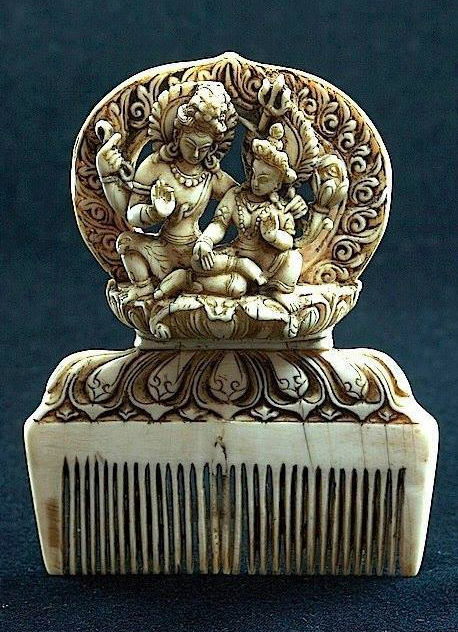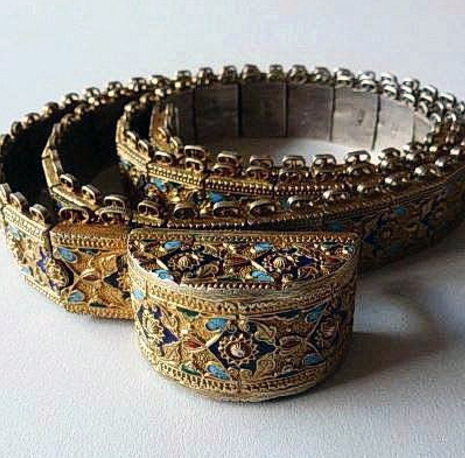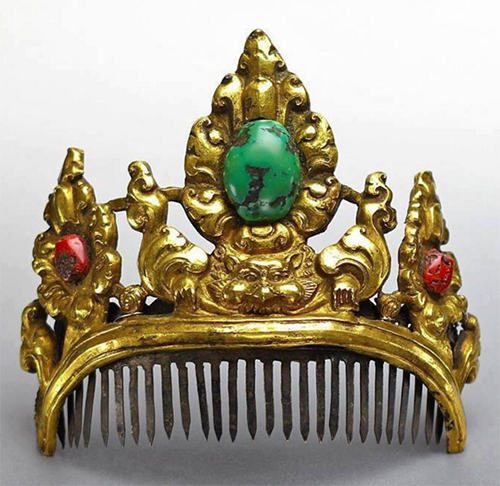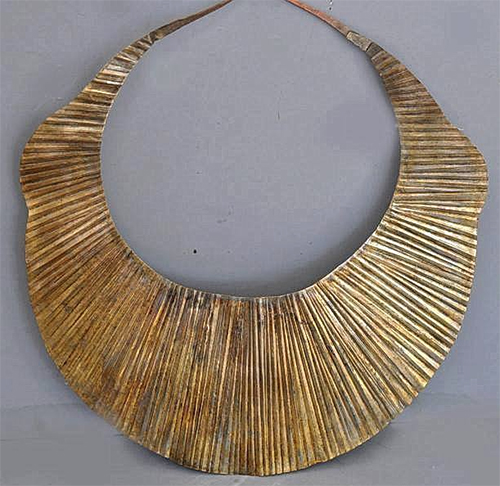This tortoiseshell, late Edo era comb has been painted with black lacquer. The artist uses Togidashi maki-e to create an image of flowers on the edge of a lake. Its reflection can be seen on the comb’s tines. Both sides are identical, and the comb is 11 cm wide and 3 mm thick. For reference,… Continue Reading

